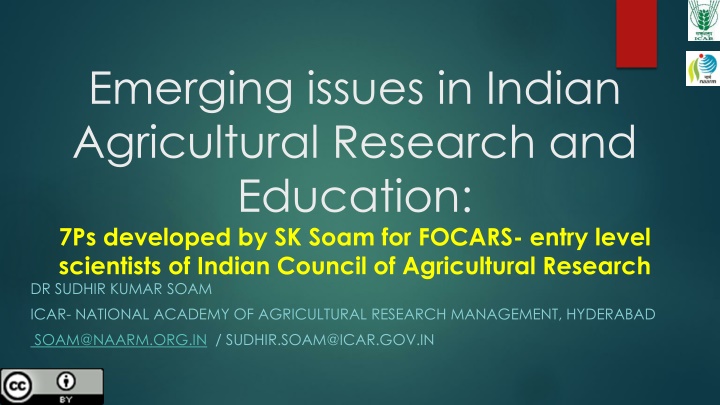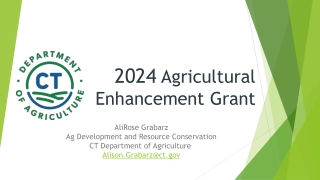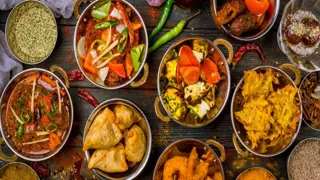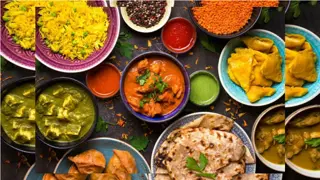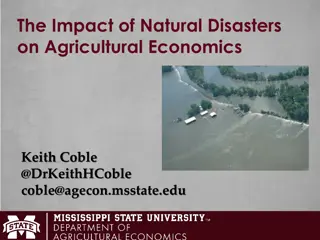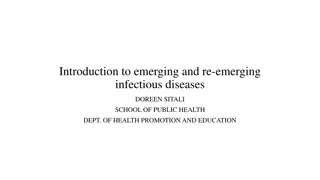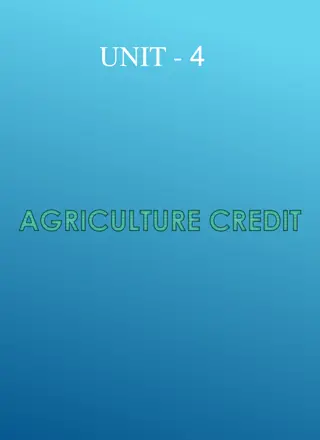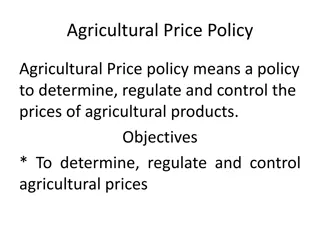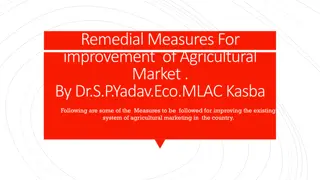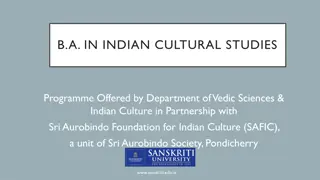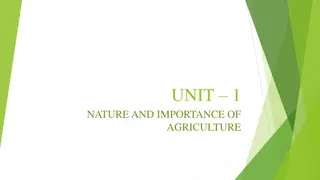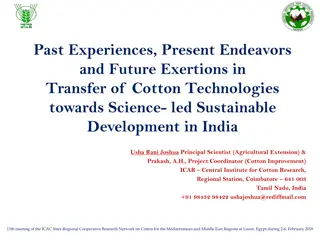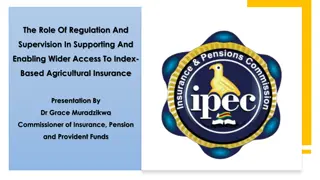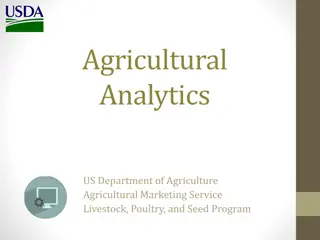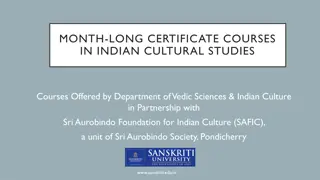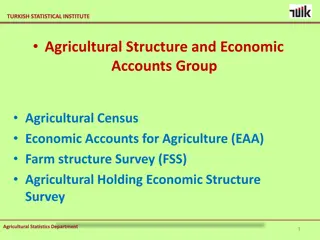Emerging Agricultural Challenges and Solutions: Insights from Indian Research
Explore emerging issues in Indian agricultural research, from major globally asked questions to strategies like produce more with less, protect intellectual property, prevent losses, provide safe solutions, and promote innovation. Discover approaches to feeding a growing population sustainably while addressing changing climates and maintaining nutritional security.
Download Presentation

Please find below an Image/Link to download the presentation.
The content on the website is provided AS IS for your information and personal use only. It may not be sold, licensed, or shared on other websites without obtaining consent from the author.If you encounter any issues during the download, it is possible that the publisher has removed the file from their server.
You are allowed to download the files provided on this website for personal or commercial use, subject to the condition that they are used lawfully. All files are the property of their respective owners.
The content on the website is provided AS IS for your information and personal use only. It may not be sold, licensed, or shared on other websites without obtaining consent from the author.
E N D
Presentation Transcript
Emerging issues in Indian Agricultural Research and Education: 7Ps developed by SK Soam for FOCARS- entry level scientists of Indian Council of Agricultural Research DR SUDHIR KUMAR SOAM ICAR- NATIONAL ACADEMY OF AGRICULTURAL RESEARCH MANAGEMENT, HYDERABAD SOAM@NAARM.ORG.IN / SUDHIR.SOAM@ICAR.GOV.IN
Emerging Issues: What are major globally asked questions? Are problems and opportunities changing over time? How to keep feeding increasing population under changing climate, while maintaining nutritional security and pace of growth? In terms of agricultural policies, should we care for farmers or farming? Enhancing productivity [is this emerging issue?/ how to produce more in less inputs?]
Produce More from less (Input use efficiency) Soil less agriculture Protected agriculture Plant factory in China Peri-urban/ Urban agriculture Terrace farming Precision agriculture
Protect Intellectual property Bio-resources Germplasm/ genetic diversity Farmers interests Consumers interests
Prevent Losses Post harvest losses Food waste Fertile top soil loss Wealth to Waste Inappropriate use of resources Environmental degradation
Provide Safe hormones, etc.) Clean environment (methane, residue burning) Professional networks scientist-farmers i.e. GRAIN in Australia)/ FPO/ Commodity commissions/ Custom hiring centers) Opinion platforms (GM communication, brand building, technology promotion) and healthy antibiotics, food (pesticide probiotics, residues, biosecurity (scientists, farmers,
Promote Innovation Knowledge networks (skill development, data- information-knowledge conversion systems) Data Sharing (Acquisition, operability, access; GIS data) Open Access data use Primary to Secondary agriculture (research and platforms such as- TBI, Start up/ Acceleration/ Venture capitalist) validation, inter-
Predict Production trend (India and competitors-e.g. Australia for gram and lentil) Price trend Abiotic and biotic stresses Advisories for farmers and insurance companies
Population dynamics Young farmers Changing food needs Retain in agriculture or shift to services Type of farming [subsistence, hobbyist, Ayurvedic medicines, religious groups etc] Population vs Density Cultural values [ICT use comfort and taste e.g. New Zealand Kiwi fruit of sour type- Designer product] #####- thanks
